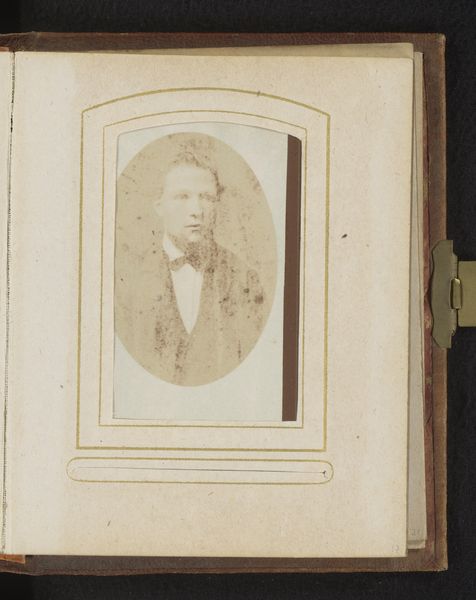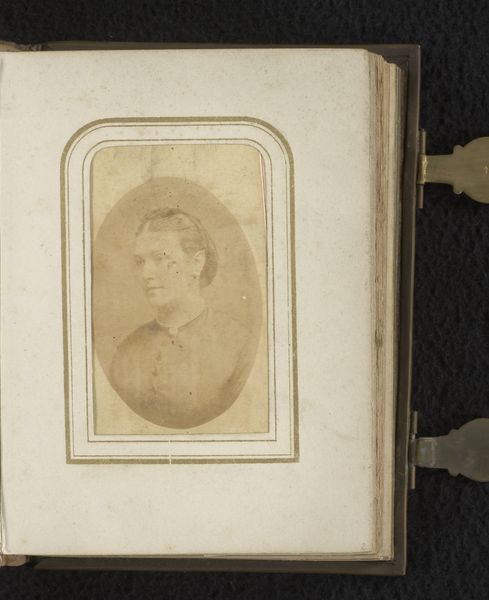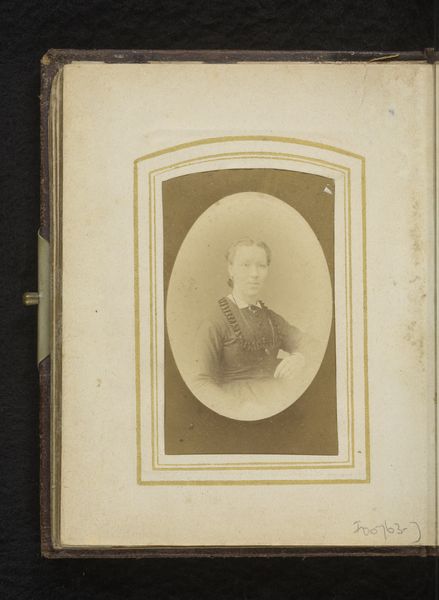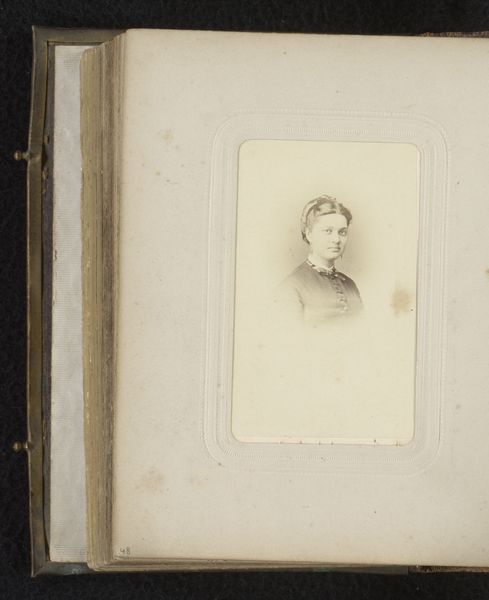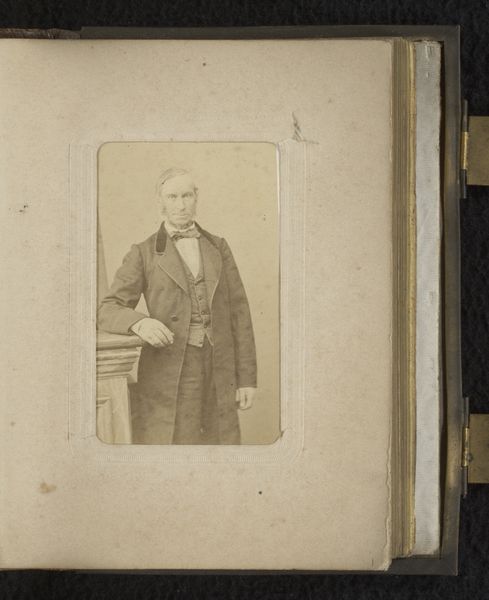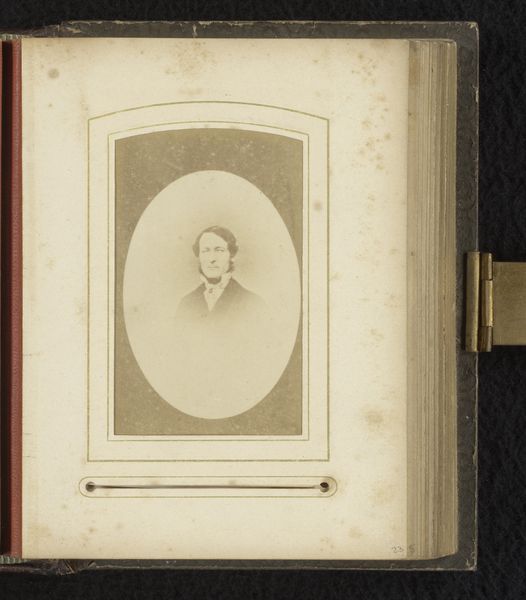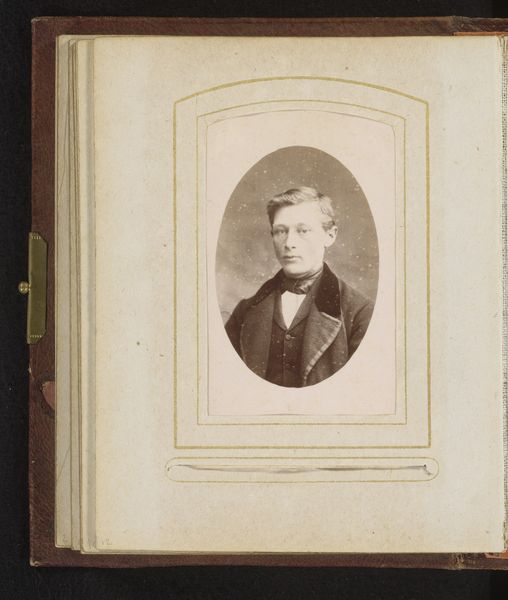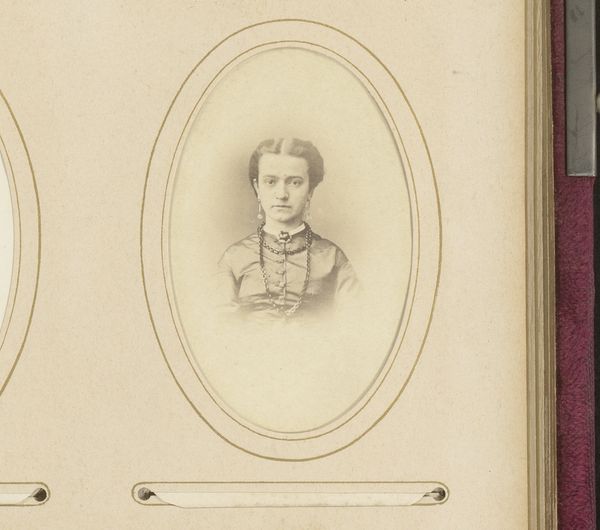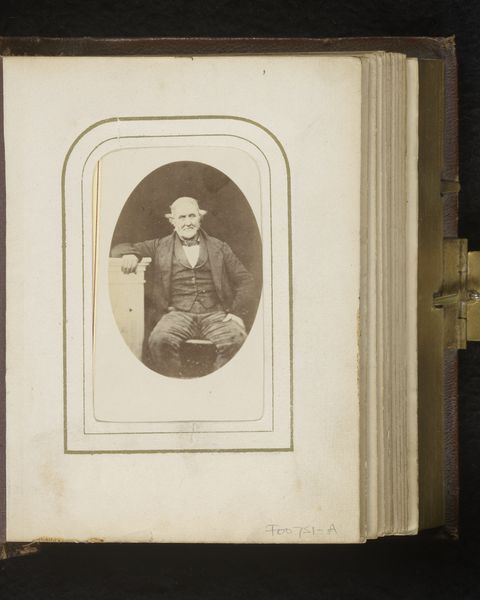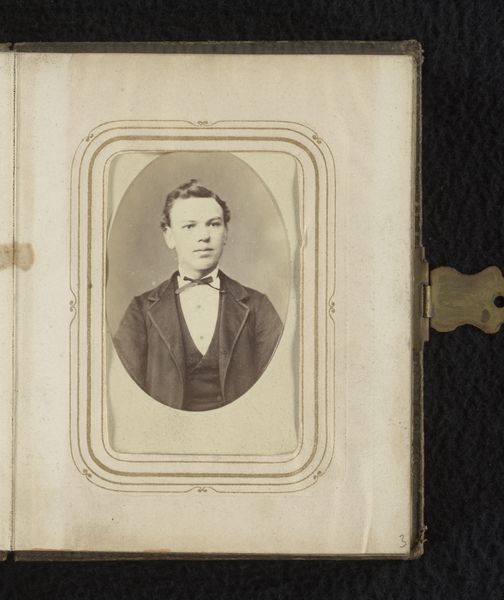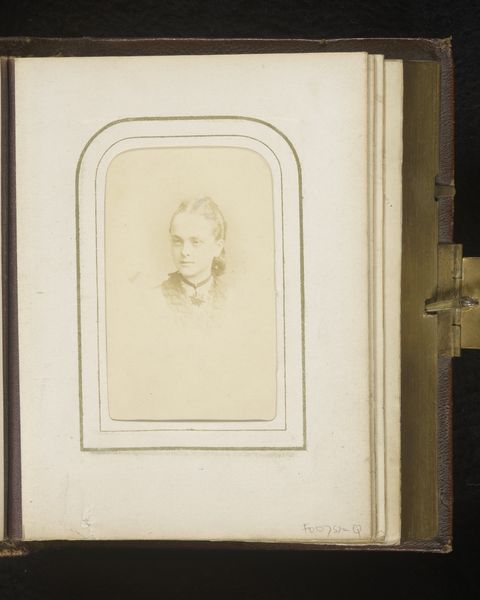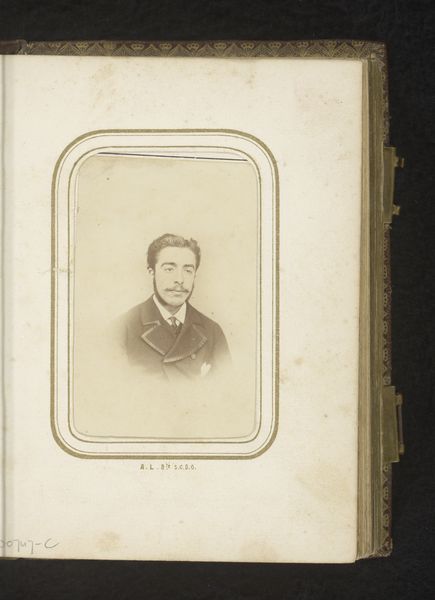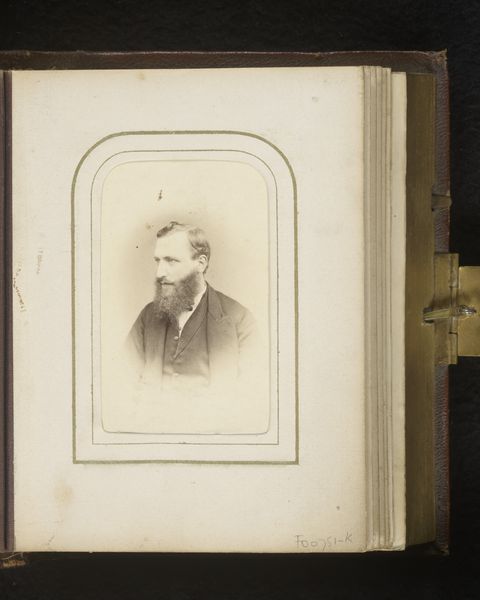
photography, albumen-print
#
portrait
#
photography
#
coloured pencil
#
albumen-print
Dimensions: height 97 mm, width 60 mm
Copyright: Rijks Museum: Open Domain
Editor: This is a portrait from between 1854 and 1865 by P. Weijnen & Fils, made with the albumen print technique, and titled "Portret van een man". I find its antique presentation very intriguing and the subject appears serious. How do you interpret this work, with its photographic style and historical context? Curator: The albumen print itself carries significance. The sepia tone evokes a sense of the past, imbuing the sitter with a sort of gravitas, linking him to historical memory. Notice how the oval frame around his portrait recalls the symbolism of mourning jewelry and memento mori prevalent in that era, while its photographic origins imply modernity. What emotions are evoked for you by this juxtaposition? Editor: I hadn’t considered that! The melding of historical imagery within a newly emerging technology creates a rich juxtaposition. It’s intriguing how this artwork manages to exist simultaneously in dialogue with both the past and the present through its materials and presentation. Curator: Exactly. He isn't just an individual; he represents an idea. The composition—his focused gaze, his conservative attire, and framing– collectively establish him as an embodiment of mid-19th century ideals and class. It asks us to consider our relationship with the past, how it influences our perceptions, and how photography played a key role in documenting this evolution. What continuities can you see in our modern culture compared to the culture represented in this artifact? Editor: That's an insightful observation. Thinking about contemporary portraiture and our digital archives of photographs is exciting. This portrait makes me wonder what images, symbols and values will carry the emotional, cultural, and psychological weight from *our* time for future generations! Thanks so much for sharing your insights! Curator: It was my pleasure. Hopefully you, like I, see more when you consider images, memory, and visual language as a dialogue with ourselves.
Comments
No comments
Be the first to comment and join the conversation on the ultimate creative platform.
